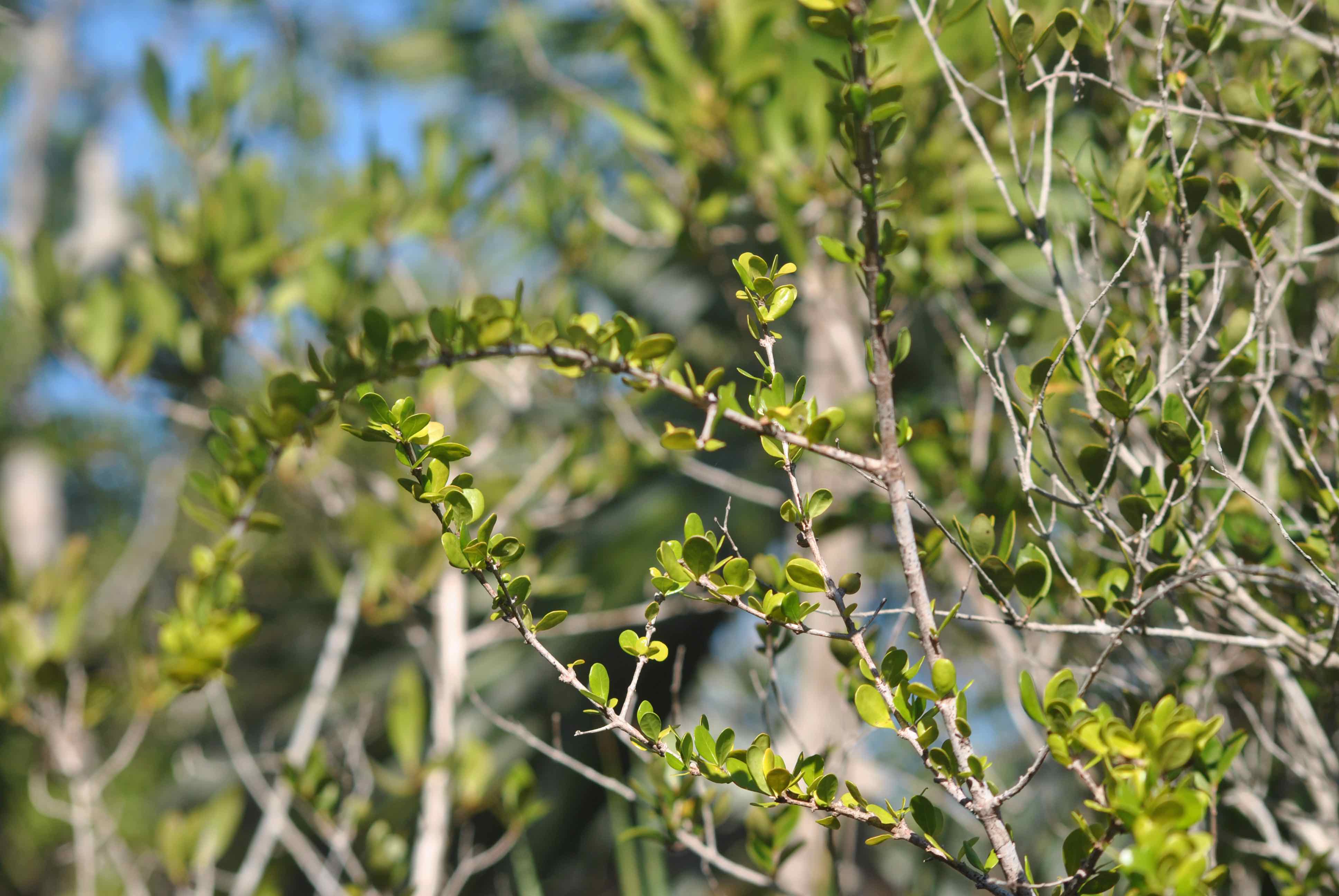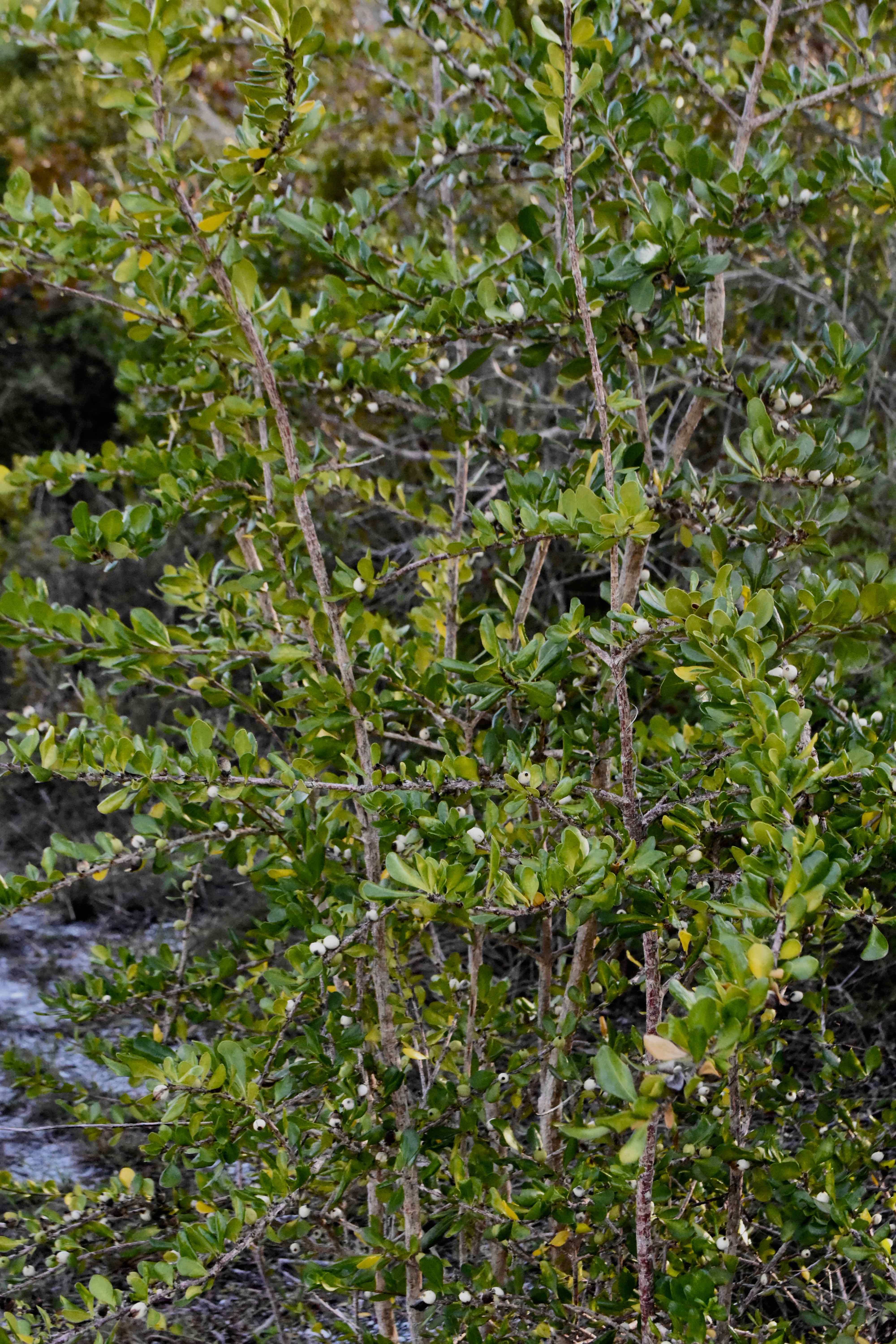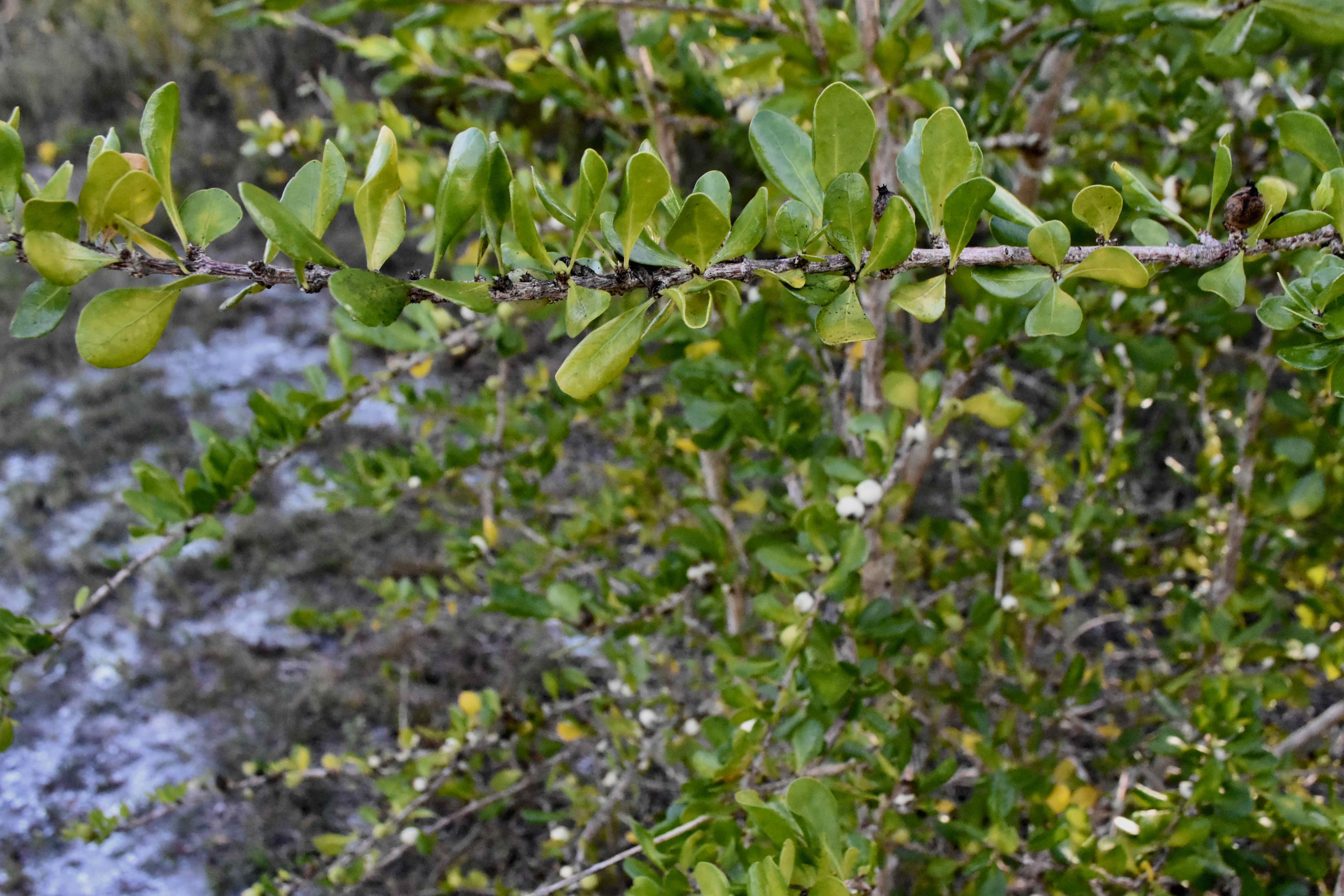
White indigoberry, photographed at Bill Baggs Cape Florida State Park, Key Biscayne, Miami-Dade County, in February 2019.
You can go fishing with it, celebrate Christmas with it or just enjoy its good looks. We’re talking about white indigoberry, Randia aculeata.
Oh and if you get hungry, you can eat it too. The berries, that is.
White indigoberry is a shrub or small tree found only in Florida among the 50 states, roughly south of Brevard and Hillsborough counties. It is a Florida native. Its range extends south through the Caribbean, Mexico, Central America to South America.
Its combination of toughness and good looks makes it useful as a landscaping plant, especially in coastal areas.
White indigoberry generally grows to six to eight feet but can be taller. Both the trunk and branches can have thorns. The bark is gray. Leaves are shiny above, round, smooth on the edges, about a half-inch to two inches long, arranged opposite each other and tend to be clustered toward the tips of branches.
White indigoberry can vary in some of its characteristics, however. Some plants don’t have thorns, the leaves on some tend to be smaller, while larger on others.
The flowers are white, with a slight yellow center, star-shaped, with five petals. White indigoberry is dioecious, meaning there are both male and female plants, and the presence of both are required to produce berries. It flowers year-round.
The berries it produces are green at first but turn white as the they ripen. White indigoberry fruit are among the few white berries that are edible for us humans, but they don’t taste very good. The flesh is deep blue, or indigo, the inspiration for the common name. Favorite habitats include the edges of coastal hammocks and pine rocklands.
As we said, it’s a tough plant. It tolerates drought, takes full sun, grows in nutrient-poor soils and will withstand salt spray. It can’t withstand long-term flooding by salt or brackish water.
The berries have been used to make ink and dye and medicinally to treat diarrhea. The sap has been used to treat hemorrhaging.
In the Keys, the branches are used as fishing poles. In parts of its range, including the Virgin Islands and Mexico, white indigoberry is used as a Christmas tree.
Birds will eat the berries and take refuge in its branches. Bees and butterflies pollinate the flowers. It is a host for tantalus sphinx moths.
The genus name, Randia, honors Isaac Rand, an 18th century English botanist; aculeata means sharp and is in reference to the thorns.
Most sources assign white indigoberry to Rubiaceae, the coffee family, but we’ve seen it listed as a member Rutaceae, the citrus family. We’ll go with Rubiaceae.
Other common names: box briar, inkberry, prickle bush and five fingers. It's also spelled white indigo berry.
Click on photo for larger image
Links for White Indigoberry



